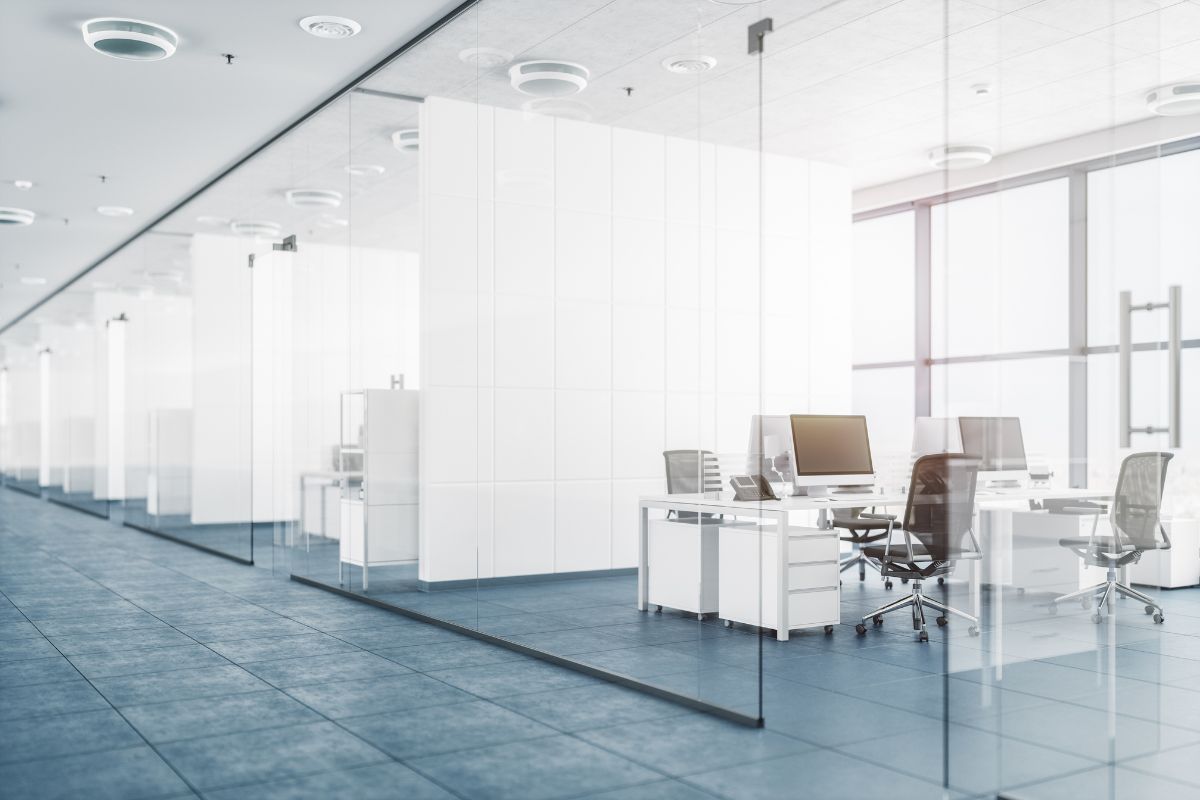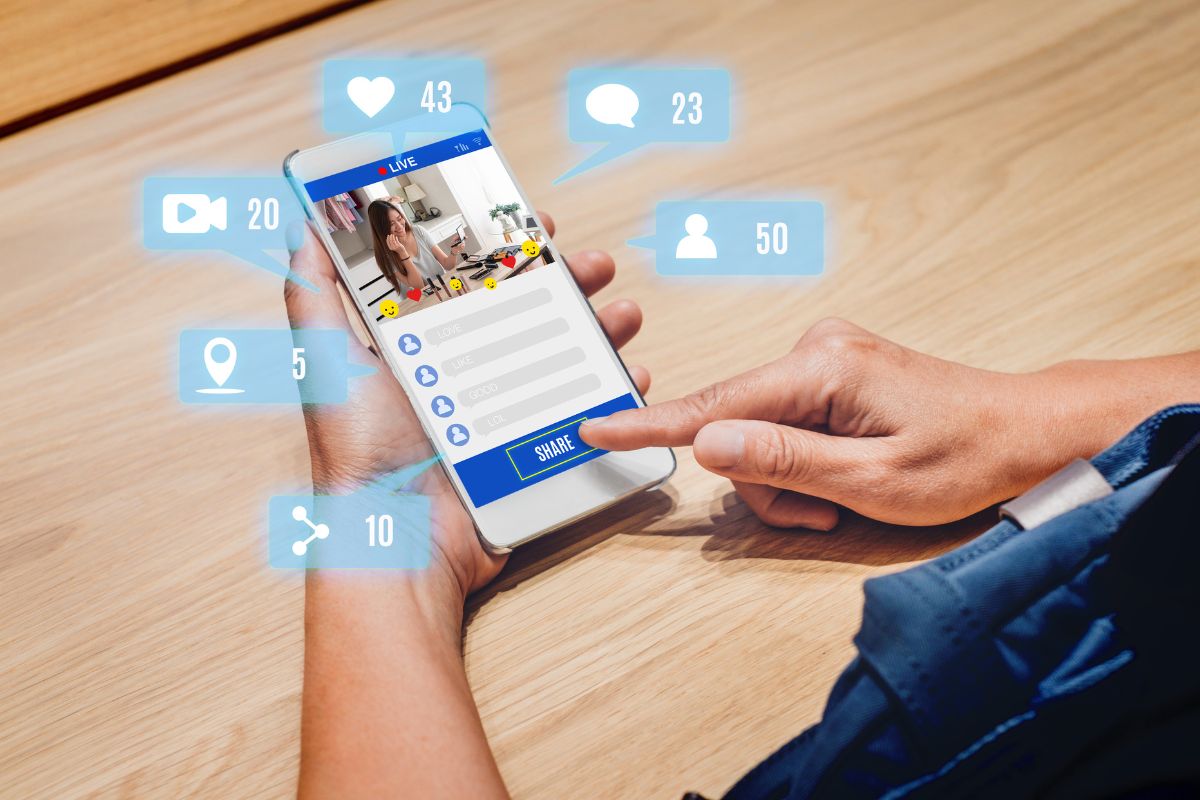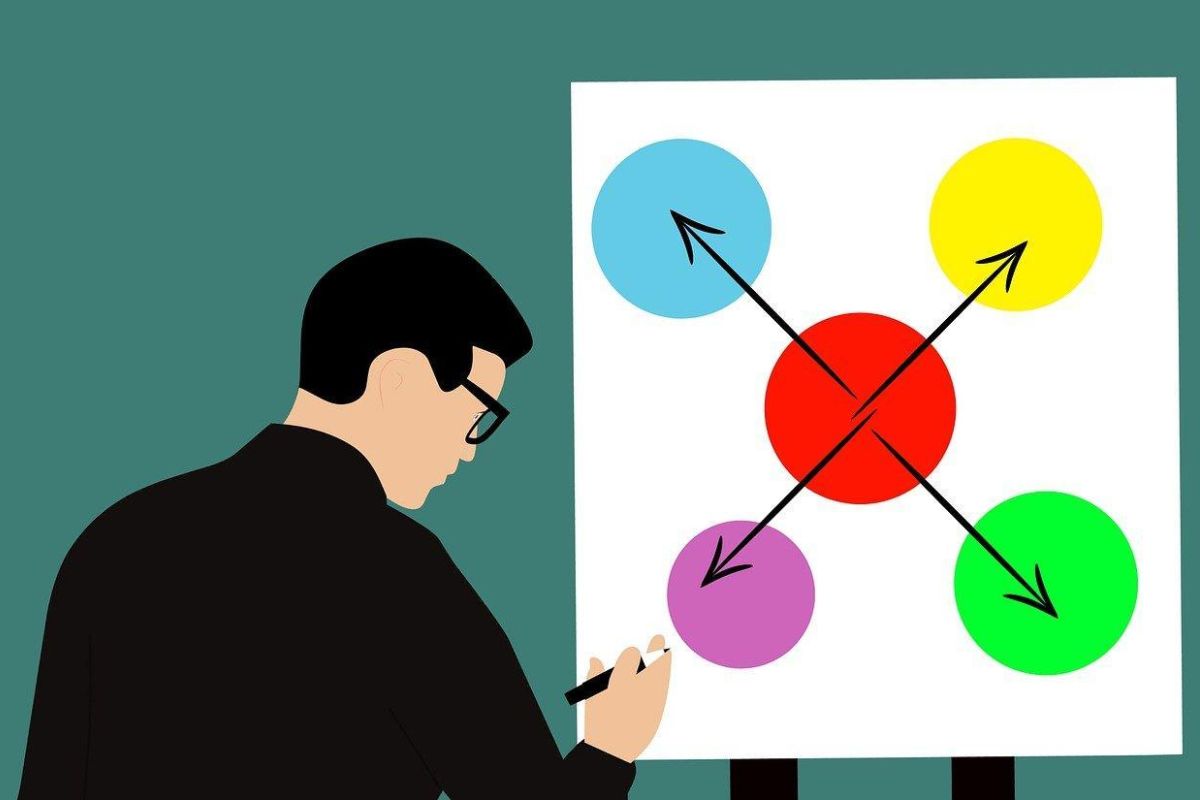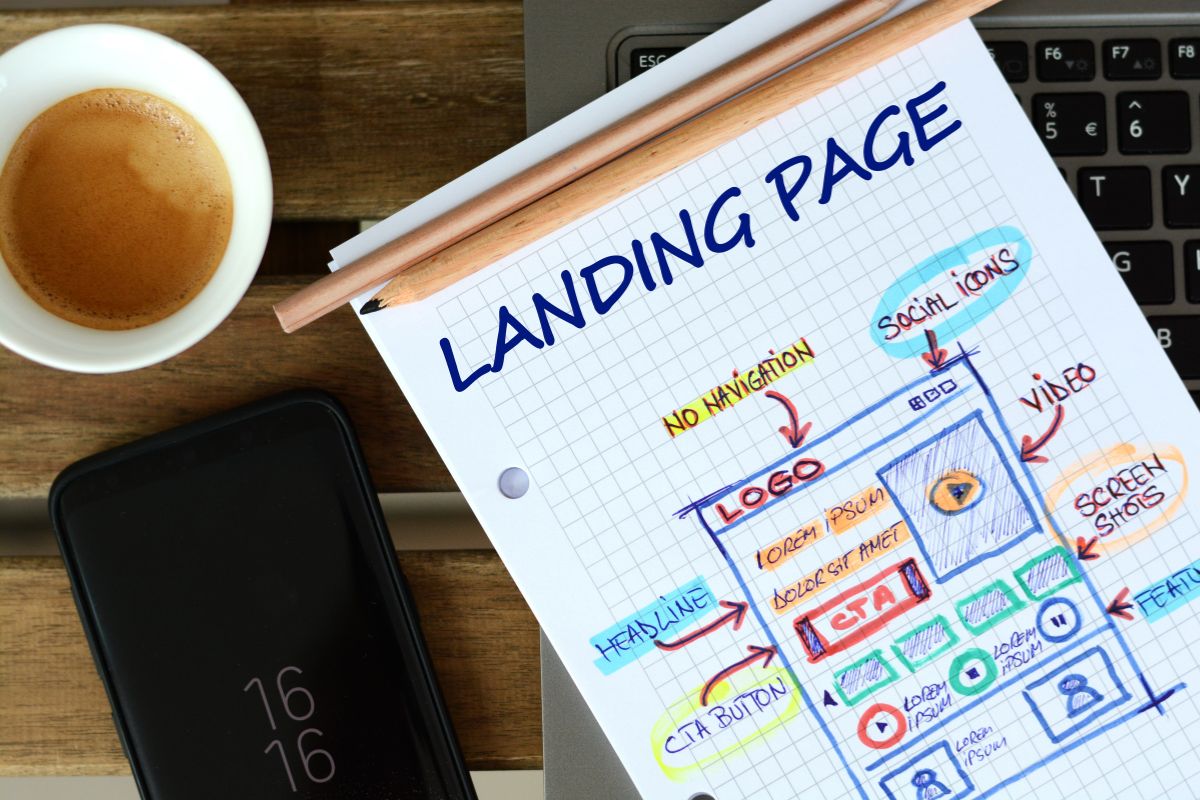In today’s fast-paced business world, creating dynamic and flexible workspaces is essential for fostering creativity, collaboration, and productivity.
One solution that has gained increasing popularity is the use of glass partitions. These transparent barriers not only delineate space but also allow for natural light to flow freely, creating an open and inviting atmosphere.
However, it’s the integration of innovative technologies that truly revolutionizes the role of glass partitions in modern business environments.
Table of Contents
ToggleDefining Glass Partitions And Their Role In Modern Business
Glass partitions for business offer a dynamic solution to modern workspace design, seamlessly blending functionality with aesthetics to elevate the work environment.
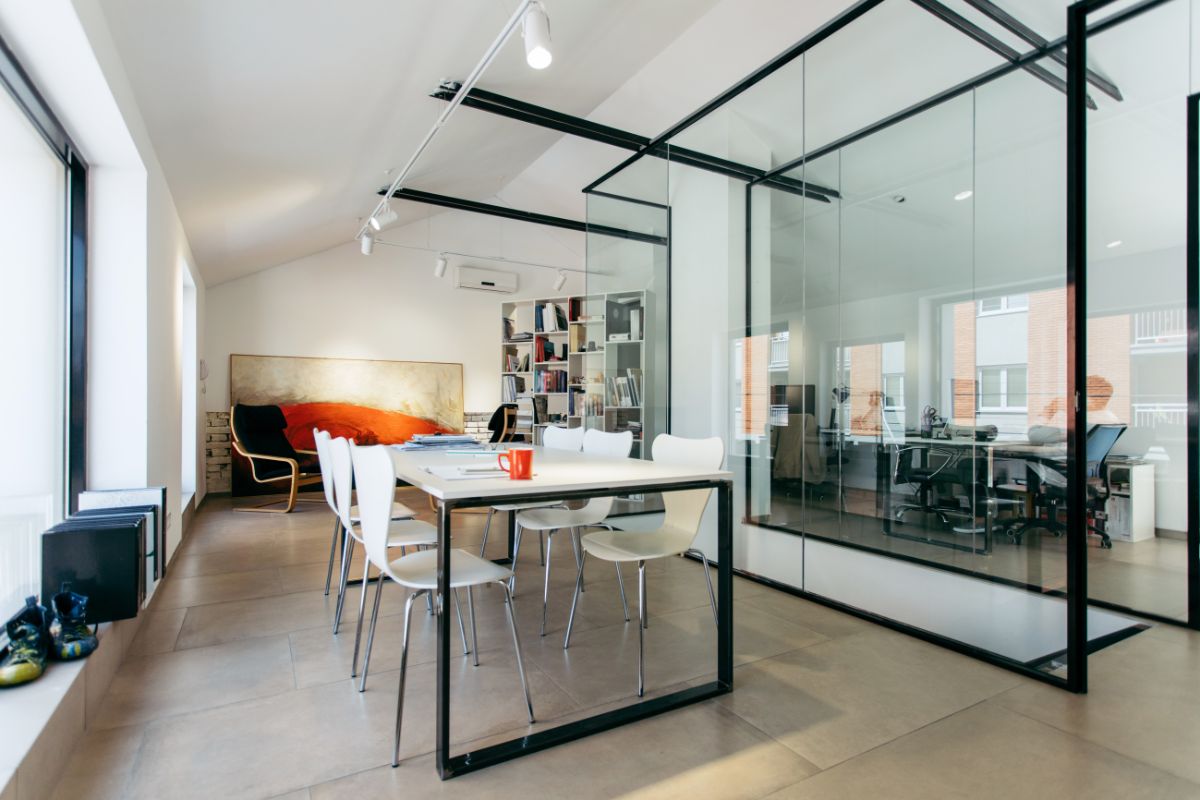
These architectural elements, crafted from transparent or translucent materials such as glass, serve as partitions within a space, delineating areas while maintaining a sense of openness and connectivity.
Unlike traditional walls, glass partitions allow natural light to permeate throughout the workspace, creating an ambiance of brightness and transparency.
This infusion of natural light not only enhances the overall atmosphere but also contributes to employee well-being and productivity.
In the context of modern business settings, glass partitions play a pivotal role in shaping the office culture and facilitating collaboration.
By breaking down physical barriers, these partitions promote visibility and accessibility, enabling employees to interact seamlessly across departments and functions.
The transparent nature of glass partitions encourages openness and communication, fostering a sense of unity and teamwork among team members.
Importance of Innovative Technologies in the Development of Glass Partitions
As businesses evolve to meet the demands of the digital age, the need for innovative technologies in workspace design becomes increasingly apparent.
Innovative technologies play a pivotal role in the development of glass partitions, enhancing their functionality, aesthetics, and sustainability.
From advanced glass manufacturing techniques to integrated smart systems, technological advancements have revolutionized the way glass partitions are conceived, constructed, and utilized in modern workplaces.
These innovations not only elevate the visual appeal of glass partitions but also enhance their performance in terms of acoustic insulation, thermal efficiency, and privacy control.
Moreover, innovative technologies enable customization and personalization, allowing businesses to tailor glass partitions to their unique needs and preferences.
Whether incorporating digital displays for interactive presentations or integrating soundproofing solutions for confidential meetings, the possibilities are virtually limitless with cutting-edge glass partition technologies.
Technological Advancements
Overview of the Latest Technologies Used in Manufacturing Glass Partitions:
1. Tempered Glass
Recent years have seen significant advancements in the manufacturing processes of glass partitions, with tempered glass emerging as a notable innovation.
Through specialized heat treatment processes, tempered glass is reinforced, enhancing its durability, clarity, and structural integrity.
This enhanced strength not only improves safety but also ensures superior resistance to impact and thermal stress, making tempered glass partitions ideal for high-traffic commercial areas.
2. Precision Cutting and Shaping Technologies
Advancements in glass cutting and shaping technologies have enabled the creation of intricate designs and patterns, adding elegance and sophistication to glass partitions.
Utilizing computer-aided design (CAD) software and precision laser cutting techniques, businesses can achieve precise customization, incorporating branding elements, logos, or artistic motifs into their glass partition installations.
3. Sustainable Manufacturing Practices
The adoption of sustainable manufacturing practices within the glass industry reflects a growing emphasis on environmental responsibility.
Manufacturers are increasingly utilizing recycled glass materials and implementing energy-efficient production methods, reducing carbon emissions and minimizing waste.
These sustainable practices align with the goals of forward-thinking businesses committed to environmental stewardship.
Impact Of Digital Technologies On The Design And Functionality Of Glass Partitions
1. Smart Glass Technology
The integration of smart glass technology has revolutionized the design and functionality of glass partitions.
Smart glass partitions allow for on-demand transparency control through the application of electrical currents, enabling users to switch between transparent and opaque states with ease.
Advanced systems feature programmable settings that automatically adjust transparency levels based on factors such as ambient light or occupancy, optimizing comfort and energy efficiency.
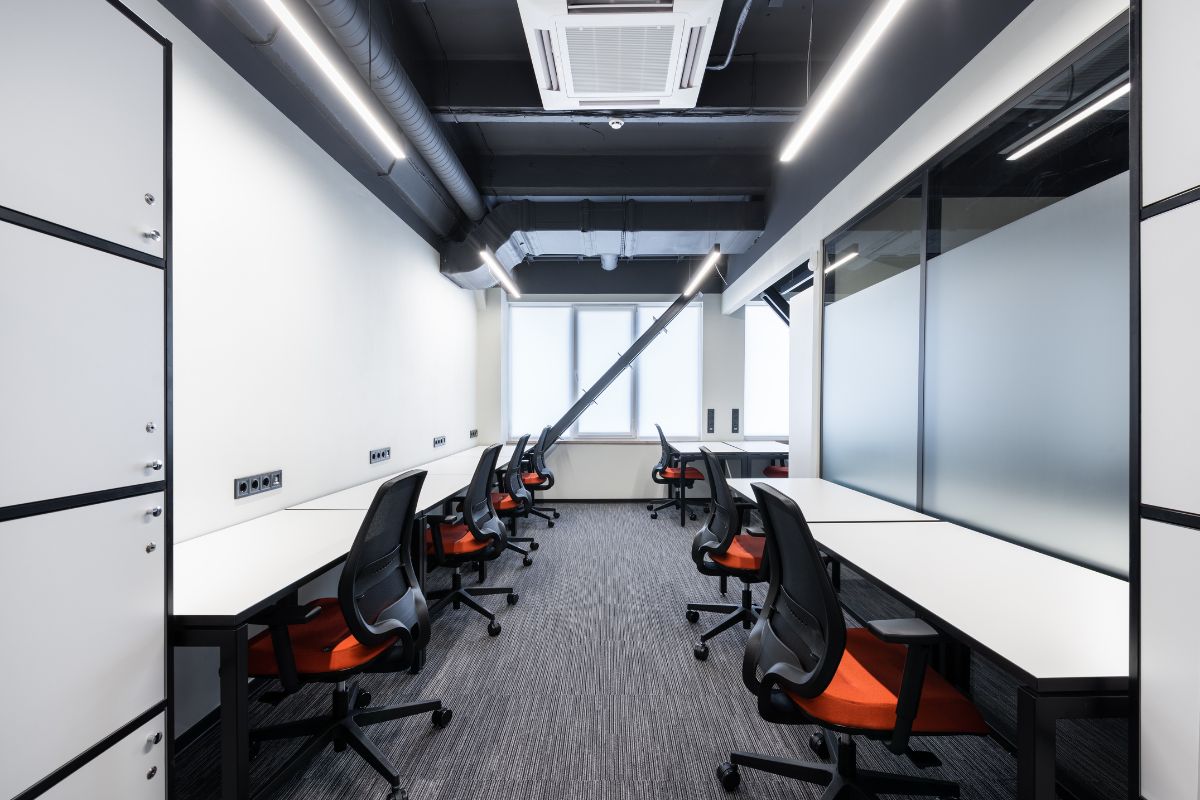
2. Multimedia Integration
Digital technologies have facilitated the incorporation of multimedia elements into glass partitions, transforming them into interactive communication hubs within the workspace.
Embedded touchscreens enable collaborative brainstorming sessions, while integrated LED displays facilitate real-time data visualization.
These digital enhancements foster engagement, creativity, and productivity among employees, enhancing the functionality of glass partitions beyond mere spatial division.
3. Augmented Reality (AR) and Virtual Reality (VR)
Innovations in AR and VR are reshaping the design and visualization processes of glass partitions.
Stakeholders can preview and customize installations in a virtual environment before fabrication, streamlining the design iteration process and ensuring alignment with client specifications.
These immersive technologies offer exciting opportunities for businesses seeking to leverage the full potential of glass partitions to create dynamic and adaptive workspaces.
Business Benefits
Incorporating glass partitions into the business environment yields a multitude of benefits, ranging from aesthetic enhancements to practical advantages that directly impact workflow efficiency and productivity.
Let’s delve into the analysis of these benefits and explore how innovative glass partition technologies contribute to the improvement of workflow and increased productivity in the workplace.
Analysis of the Benefits of Using Glass Partitions in the Business Environment:
1. Enhanced Aesthetics
Glass partitions exude a sense of modernity and sophistication, elevating the overall aesthetic appeal of the workspace.
Their sleek and transparent design creates an illusion of spaciousness, making even smaller areas feel more expansive and inviting.
This aesthetic enhancement can leave a lasting impression on clients, visitors, and employees alike, reflecting positively on the company’s brand image and culture.
2. Optimized Natural Light
Unlike traditional opaque walls, glass partitions allow natural light to permeate throughout the workspace, reducing the reliance on artificial lighting sources.
Increased exposure to natural light has been linked to numerous health and wellness benefits, including improved mood, concentration, and overall well-being.
By harnessing the power of natural light, businesses can create a more vibrant and energizing work environment for their employees.
3. Flexible Space Utilization
Glass partitions offer unparalleled flexibility in space utilization, allowing businesses to adapt and reconfigure their layouts according to evolving needs and priorities.
Whether dividing large open areas into smaller work zones or creating temporary meeting spaces for collaborative projects, glass partitions provide a versatile solution that can easily accommodate changes in workflow and organizational dynamics.
4. Improved Collaboration and Communication
By fostering transparency and visibility, glass partitions facilitate seamless communication and collaboration among team members.
Employees can easily interact and exchange ideas across partitions, fostering a culture of openness, accessibility, and teamwork.
This enhanced connectivity not only accelerates decision-making processes but also promotes innovation and knowledge sharing within the organization.
5. Privacy Without Isolation
Contrary to popular belief, glass partitions offer a balance between privacy and connectivity, providing a sense of enclosure without creating barriers to interaction.
Innovative technologies, such as smart glass systems with adjustable transparency levels, allow businesses to tailor privacy settings according to specific requirements, ensuring confidentiality without compromising accessibility or natural light.
Improvement Of Workflow And Increased Productivity Through Innovative Glass Partition Technologies
1. Streamlined Communication
Innovative glass partition technologies, such as integrated touchscreen displays and digital whiteboards, streamline communication and collaboration by providing interactive tools for brainstorming, ideation, and project management.

These digital enhancements enable real-time collaboration across distributed teams, eliminating the constraints of physical distance and enhancing workflow efficiency.
2. Efficient Space Management
Smart glass partition systems equipped with occupancy sensors and automated controls optimize space utilization by dynamically adjusting partition configurations based on occupancy levels and usage patterns.
By maximizing available space and minimizing waste, businesses can create a more efficient and productive work environment that supports agile workflows and seamless transitions between tasks.
3. Personalized Work Environments
Advanced glass partition technologies allow for personalized work environments tailored to individual preferences and workstyles.
Employees can customize partition settings, such as lighting levels, privacy modes, and temperature controls, to create a comfortable and conducive workspace that enhances productivity and well-being.
This level of customization fosters a sense of ownership and empowerment among employees, leading to greater job satisfaction and performance.
4. Data-Driven Insights
Smart glass partition systems equipped with sensors and analytics capabilities provide valuable data-driven insights into workspace utilization, employee behavior, and environmental conditions.
By analyzing this data, businesses can identify inefficiencies, bottlenecks, and areas for improvement within their workspaces, enabling targeted interventions to optimize workflow and enhance productivity.
The Role of Design In Creating an Attractive And Functional Business Environment
In the realm of modern workspace design, the synergy between aesthetics and functionality is paramount.
The strategic integration of design principles and interactive elements within glass partitions not only creates visually appealing environments but also fosters engagement, collaboration, and communication among employees.
Design plays a pivotal role in shaping the ambiance and functionality of the business environment, influencing everything from employee morale and productivity to client perceptions and brand identity.
When it comes to glass partitions, thoughtful design considerations can transform ordinary spaces into inspiring and dynamic work environments that cater to the diverse needs and preferences of stakeholders.
Spatial Planning and Flow
Effective design begins with thoughtful spatial planning and flow, ensuring that the layout of glass partitions optimizes space utilization while promoting seamless navigation and connectivity.
By strategically positioning partitions to delineate work zones, collaboration areas, and circulation pathways, designers can create a cohesive and ergonomic workspace that facilitates productivity and collaboration.
Aesthetic Harmony and Brand Expression
Glass partitions offer a canvas for creative expression, allowing businesses to infuse their brand identity and culture into the physical environment.
Whether through the use of corporate colors, logo treatments, or graphic motifs, designers can leverage glass partitions as a branding tool to reinforce company values and create a cohesive visual identity that resonates with employees and visitors alike.
Material Selection and Texture
Beyond aesthetics, the choice of materials and textures plays a crucial role in the functionality and sensory experience of glass partitions.
From frosted glass for added privacy to etched patterns for visual interest, designers can explore a diverse range of options to achieve the desired balance of transparency, opacity, and tactility that enhances both the form and function of glass partitions.
Lighting Design and Ambiance
Lighting design is another critical aspect of creating an inviting and functional business environment, especially when it comes to maximizing the benefits of natural light through glass partitions.
Designers can incorporate innovative lighting solutions, such as LED strips, recessed fixtures, or pendant luminaires, to accentuate the transparency of glass partitions and create dynamic lighting effects that enhance mood, productivity, and well-being.
Utilization Of Interactive Elements In Glass Partitions To Enhance Engagement and Communication
In addition to aesthetic considerations, the integration of interactive elements within glass partitions offers exciting opportunities to enhance engagement, communication, and collaboration in the workplace.
By leveraging digital technologies and sensory interfaces, designers can transform static partitions into dynamic communication hubs that empower employees to interact and innovate in new ways.
1. Touchscreen Displays And Digital Whiteboards
Interactive touchscreen displays and digital whiteboards embedded within glass partitions provide versatile tools for brainstorming, ideation, and collaboration.

Whether conducting impromptu meetings, sharing presentations, or annotating documents in real time, these interactive elements foster creativity, engagement, and knowledge sharing among team members.
2. Augmented Reality (AR) and Virtual Reality (VR) Experiences
AR and VR technologies offer immersive experiences that transcend physical limitations, allowing users to interact with virtual content overlaid onto glass partitions.
Designers can leverage AR and VR applications to create interactive presentations, virtual tours, or training simulations that enhance communication, learning, and engagement in the workplace.
3. Gesture Recognition and Motion Sensors
Gesture recognition and motion sensors embedded within glass partitions enable intuitive interactions without the need for physical interfaces or controls.
By detecting gestures and movements, these interactive elements facilitate hands-free navigation, content manipulation, and collaborative activities, enhancing user convenience and accessibility in the workplace.
4. Integrated Communication and Collaboration Platforms
Glass partitions equipped with integrated communication and collaboration platforms enable seamless connectivity across distributed teams, regardless of location or device.
From video conferencing and instant messaging to file sharing and document collaboration, these integrated solutions streamline communication workflows and foster collaboration in real time, bridging the gap between remote and in-person interactions.
Implementation Strategies
Implementing glass partition technologies in business settings requires careful planning, strategic considerations, and a thorough understanding of the organization’s needs and objectives.
From selecting the right technologies to seamlessly integrating glass partitions into existing office layouts, successful implementation strategies are essential for maximizing the benefits of these innovative solutions.
Assessment of Needs and Objectives
Begin by conducting a comprehensive assessment of the organization’s spatial requirements, workflow dynamics, and communication preferences.
Identify specific pain points, challenges, and opportunities that could be addressed through the implementation of glass partition technologies.
This assessment will serve as a foundation for developing tailored solutions that align with the organization’s goals and priorities.
Technology Selection and Integration
Research and evaluate various glass partition technologies available in the market, considering factors such as functionality, compatibility, scalability, and cost-effectiveness.
Choose solutions that offer the flexibility, customization options, and integration capabilities required to meet the organization’s unique needs.
Collaborate closely with technology vendors and integrators to ensure seamless integration with existing infrastructure and systems.
Employee Training and Adoption
Invest in comprehensive training programs to familiarize employees with the features, functionalities, and benefits of glass partition technologies.
Provide hands-on demonstrations, workshops, and user manuals to ensure that employees feel confident and proficient in utilizing these tools effectively.
Encourage active participation and feedback from employees throughout the implementation process to foster a culture of continuous learning and improvement.
Change Management and Communication
Implement a robust change management strategy to facilitate a smooth transition to the new glass partition technologies.
Communicate openly and transparently with employees about the rationale behind the implementation, the expected benefits, and the support available to assist them during the transition period.
Address any concerns or resistance to change proactively, and solicit input from employees to ensure their needs are being met.
Monitoring and Evaluation
Establish key performance indicators (KPIs) and metrics to measure the impact of glass partition technologies on business outcomes, such as productivity, collaboration, and employee satisfaction.
Regularly monitor and evaluate the effectiveness of the implemented solutions, gathering feedback from stakeholders and adjusting strategies as needed to optimize performance and maximize return on investment.
Considerations for Integrating Glass Partitions into Existing Office Layouts and Designs
Space Planning and Layout Optimization: Conduct a thorough analysis of the existing office layout and spatial configuration to identify opportunities for integrating glass partitions effectively.
Consider factors such as traffic flow, accessibility, natural light distribution, and acoustic requirements when determining the placement and orientation of glass partitions within the workspace.
1. Compliance and Safety Regulations
Ensure compliance with building codes, regulations, and safety standards governing the installation and use of glass partitions in commercial environments.
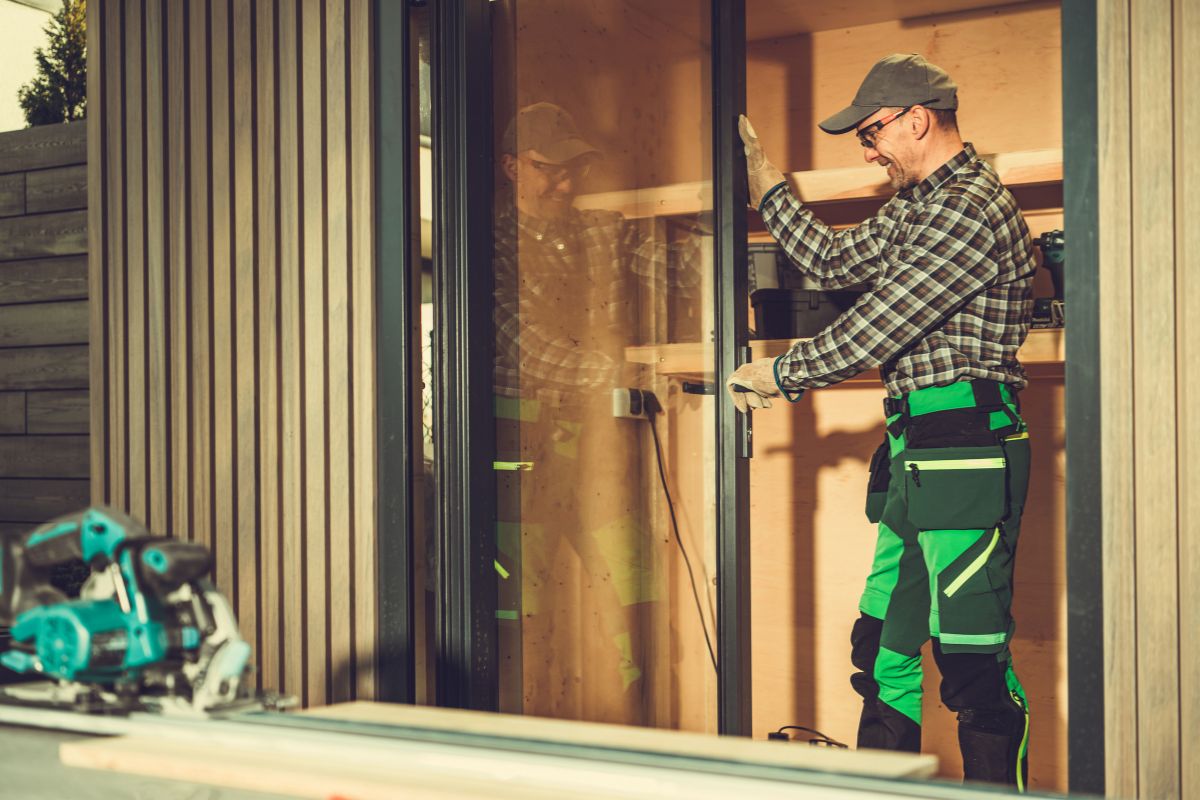
Work closely with architects, engineers, and regulatory authorities to address any legal or safety considerations associated with the implementation of glass partition technologies.
2. Aesthetic Harmony and Brand Identity
Integrate glass partitions seamlessly into the existing office design to maintain aesthetic harmony and reinforce the organization’s brand identity.
Consider factors such as color schemes, finishes, and branding elements when selecting glass partition materials and configurations.
Strive to create a cohesive and visually appealing environment that reflects the organization’s values and culture.
3. Scalability and Future Expansion
Plan for scalability and future expansion by selecting glass partition solutions that can adapt to changing business needs and growth trajectories.
Choose modular, flexible designs that allow for easy reconfiguration and expansion as the organization evolves over time.
Anticipate future requirements and allocate resources accordingly to accommodate potential changes in office layout or spatial requirements.
4. Sustainability and Environmental Impact
Prioritize sustainability and environmental responsibility when selecting materials and technologies for glass partitions.
Choose eco-friendly glass options, such as low-emissivity (Low-E) glass or recycled glass, and opt for energy-efficient solutions, such as smart glass systems with automated controls for lighting and temperature regulation.
Minimize waste and carbon footprints throughout the implementation process, adhering to sustainable practices and principles.
Case Studies
Tech Startup Headquarters
A rapidly growing tech startup transformed its headquarters into a vibrant and collaborative workspace by incorporating innovative glass partition technologies.
Smart glass partitions with adjustable transparency levels were installed throughout the office, providing employees with the flexibility to create private meeting spaces or open collaboration areas as needed.
The implementation of touchscreen displays embedded within the glass partitions facilitated seamless communication and brainstorming sessions, fostering creativity and productivity among team members.
As a result, the company experienced improved workflow efficiency, enhanced collaboration, and higher employee satisfaction rates.
Corporate Headquarters Renovation
A multinational corporation revamped its corporate headquarters to reflect its commitment to sustainability and innovation.
Recycled glass partitions were extensively utilized throughout the office, creating transparent dividers that allowed natural light to flood into the workspace.
Integrated smart glass systems automatically adjust transparency levels based on occupancy and environmental conditions, optimizing energy efficiency and creating a comfortable work environment for employees.
The implementation of interactive digital displays within the glass partitions facilitated dynamic presentations, training sessions, and client meetings, enhancing engagement and communication within the organization.
Future Trends
Emerging Trends in Glass Partition Technologies:
1. Enhanced Connectivity
Future glass partition technologies will focus on enhancing connectivity and collaboration through advanced communication features, such as augmented reality (AR) and virtual reality (VR) integration.
These immersive technologies will enable remote teams to collaborate seamlessly and engage in virtual meetings within a shared digital workspace.
2. Biophilic Design
There is a growing emphasis on biophilic design principles in glass partition technologies, with a focus on incorporating natural elements and greenery into the workspace.
Living walls, vertical gardens, and bio-responsive glass partitions will become increasingly prevalent, fostering connections with nature and promoting employee well-being.
3. Intelligent Automation
Smart glass partition systems will continue to evolve with the integration of artificial intelligence (AI) and machine learning capabilities, allowing for predictive analytics and intelligent automation of workspace functions.
These systems will adapt to user preferences, anticipate needs, and optimize environmental conditions for maximum comfort and productivity.
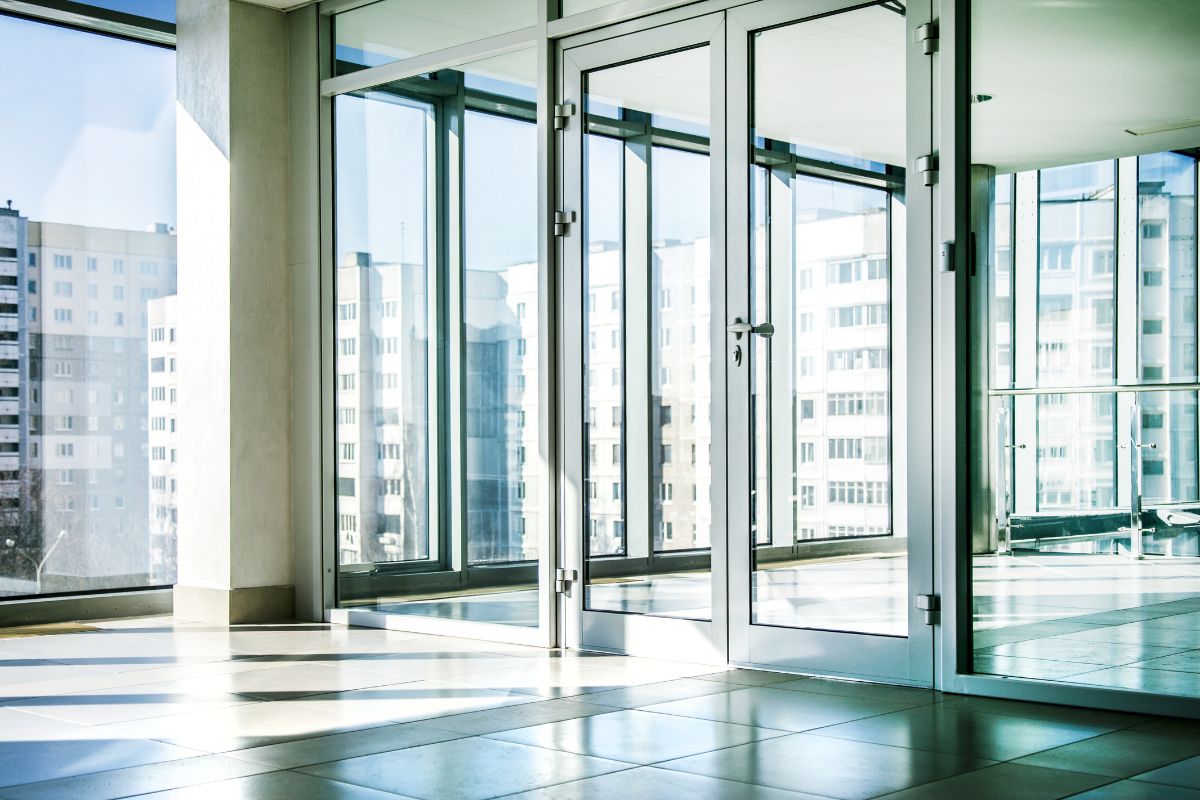
Predictions For The Future of Glass Partition Technologies
Personalized Environments
Glass partition technologies will enable the creation of personalized work environments tailored to individual preferences and requirements.
Employees will have the ability to customize partition settings, lighting levels, and environmental controls to create a personalized workspace that enhances productivity and well-being.
Seamless Integration
Future glass partition technologies will seamlessly integrate with other smart building systems and IoT (Internet of Things) devices, creating interconnected ecosystems that enhance efficiency, convenience, and sustainability within the workplace.
Integration with building management systems, occupancy sensors, and environmental sensors will enable real-time monitoring and optimization of workspace conditions.
Sustainable Innovations
There will be a continued focus on sustainability and environmental responsibility in the development of glass partition technologies, with an emphasis on eco-friendly materials, energy-efficient designs, and minimal environmental impact.
Innovations such as self-cleaning glass coatings and photovoltaic-integrated glass partitions will further reduce maintenance requirements and carbon emissions.
Conclusion
The evolution of glass partition technologies represents a transformative shift in the way businesses design and utilize their workspace environments.
From enhancing collaboration and communication to promoting sustainability and well-being, innovative glass partition technologies offer a multitude of benefits that empower organizations to thrive in the digital age.
As these technologies continue to evolve and shape the future of business environments, embracing the opportunities they present will be essential for staying competitive and driving success in the ever-changing landscape of modern workspaces.

